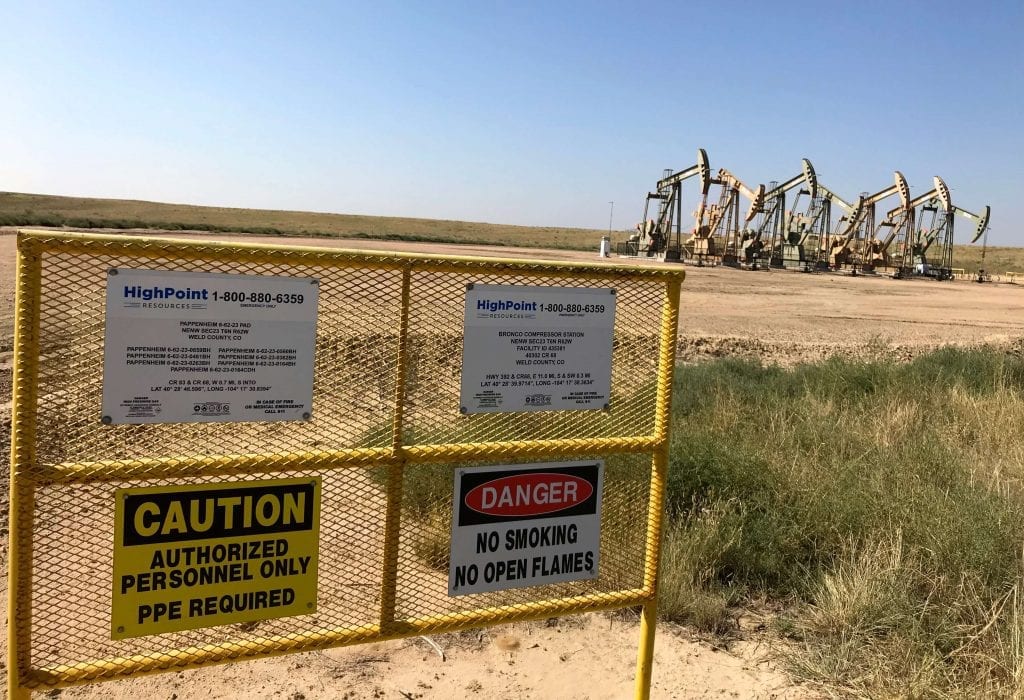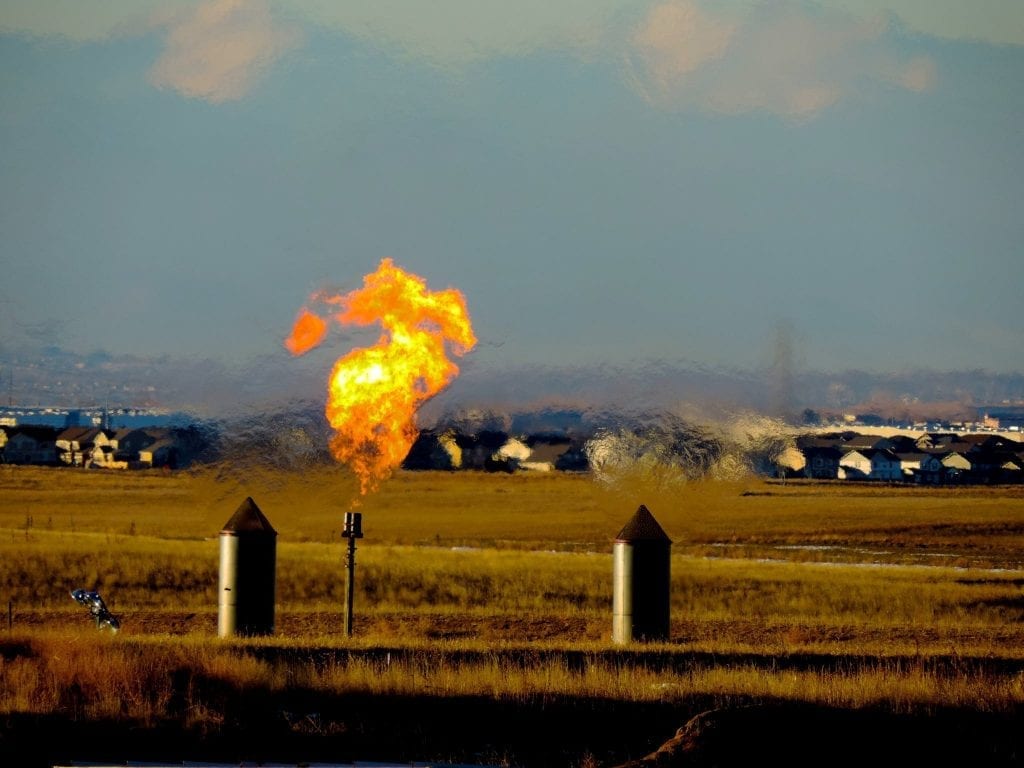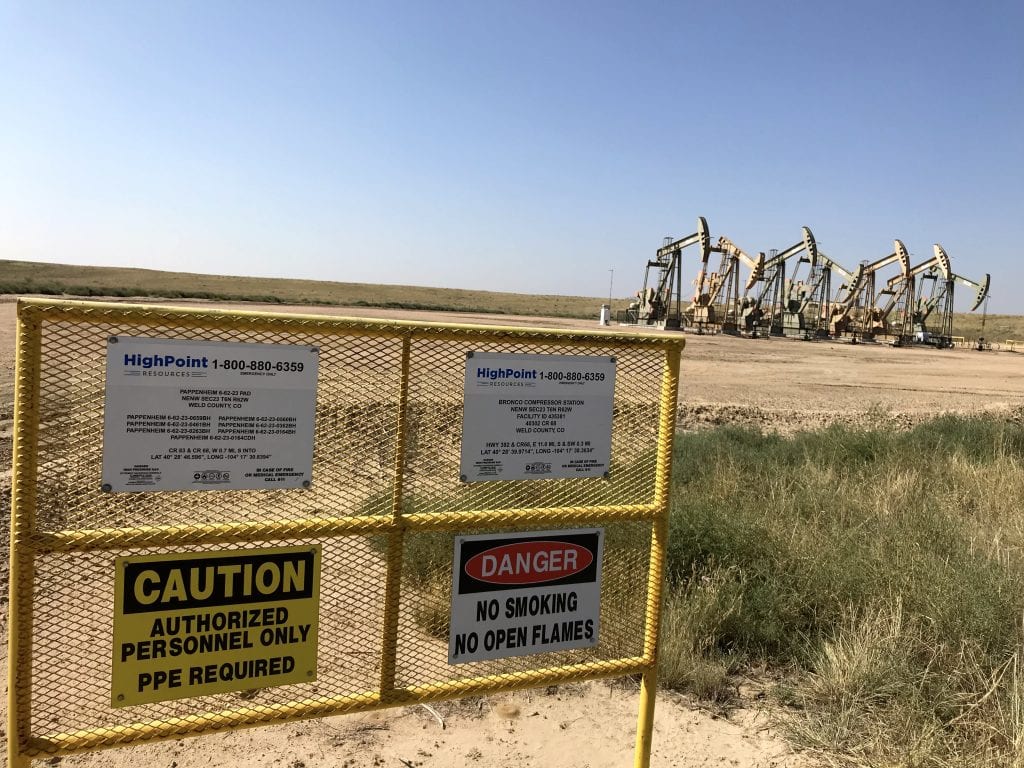
Massive new oil wells east of Greeley, Colorado along the Front Range. These wells were developed using horizontal drilling and fracking.
As of the end of August, the Front Range region of Colorado registered one of the smoggiest summers in recent years, with levels exceeding federal health standards at monitors from Douglas County north to Denver and up to Larimer and Weld Counties.
This dangerous air pollution shows that the oil and gas industry continues to take a threatening toll on the air that more than 3 million people depend on.
According to the latest data from the Colorado Air Pollution Control Division, this past summer, 16 monitoring sites along the Front Range registered exceedances of federal limits on ground-level ozone.
For years now, the Front Range region has struggled with unhealthy levels of ozone. In 2007, the region–including all of Adams, Arapahoe, Boulder, Broomfield, Denver, Douglas, and Jefferson Counties, and most of Larimer and Weld Counties–was designated “nonattainment” due to violations of limits on ground-level ozone pollution.
While the nonattainment designation was supposed to lead to a clean up of the region’s smog, sadly, the clean air violations have only worsened in the last 11 years.
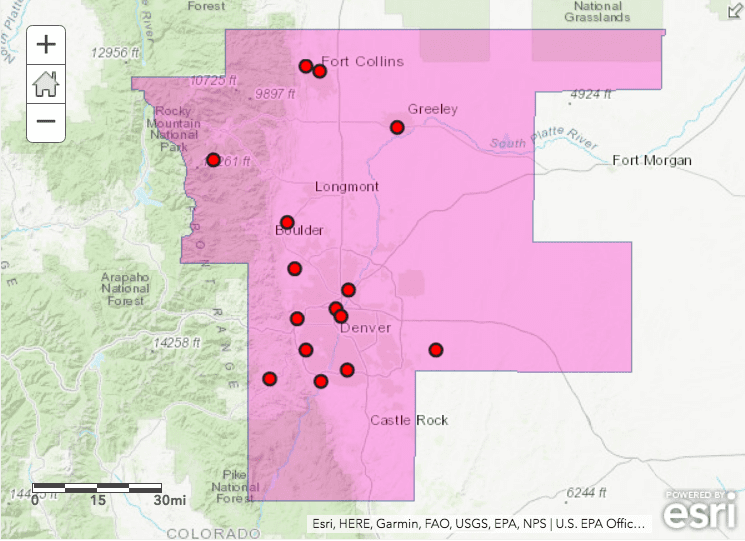
Front Range ozone “nonattainment” area with monitoring sites identified.
Ozone is an incredibly toxic gas and current federal health limits are incredibly low for this reason. Current standards restrict ozone concentrations to no more than 0.070 parts per million over an eight hour period (equal to 70 parts per billion).
That means for every million molecules of air, if only 0.000007% of it is ozone for eight or more hours, it’s dangerous.
Under federal rules, violations of ozone standards are triggered only after air quality continually exceeds this limit. At any monitoring site, if the three year average of the fourth highest eight hour ozone reading exceeds 0.070 parts million, then there’s a violation (if you really want to wonk out, read the actual rule).
This means a monitoring site would have to exceed federal ozone limits at least four times a year for up to three years to trigger a violation.
In other words, when a violation of ozone standards occurs, the air is really, really bad.
Along the Front Range, seven monitoring sites are registering violations, including monitors in Arapahoe, Douglas, Jefferson, and Larimer Counties. As the table below illustrates, the latest monitoring data shows ozone concentrations are far above the level of current health limits.

The main reason for this unhealthy smog pollution? Increasing air pollution from ramped up fracking.
Ozone isn’t released directly, but forms from two key pollutants–volatile organic compounds and nitrogen oxides. Volatile organic compounds are essentially industrial vapors (think smelly gas stations), while nitrogen oxides are a byproduct of combustion (tailpipes, smokestacks, etc.).
It surprises people to learn that the oil and gas industry is a major source of volatile organic compounds and nitrogen oxides Denver Metro Area, as well as a major contributor to the region’s smog problem.
In fact, the State of Colorado estimates that as of 2017, the oil and gas industry is responsible for 44% of all volatile organic compound emissions (more than all cars and trucks) and more than a quarter of all nitrogen oxide emissions in the Denver Metro Area.
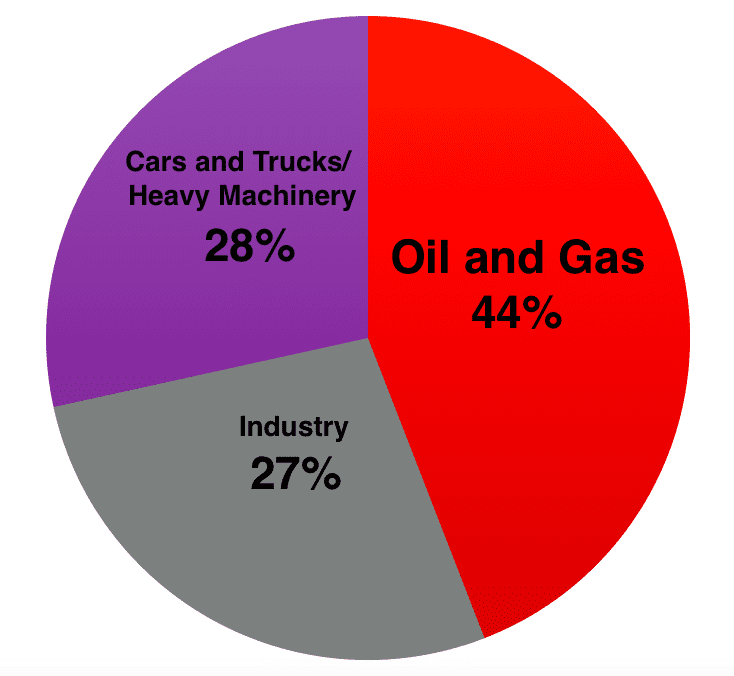
Volatile organic compound emissions released by source in Colorado Front Range ozone nonattainment area.
A recent peer-reviewed study by the National Oceanic and Atmospheric Administration even confirmed that these emissions contribute on average to nearly 20% of the region’s smog, making the oil and gas industry “an important contributor to the region’s chronic ozone problem.”
These emissions come from myriad sources, including leaks, venting, flaring, compressor engines, drilling rigs, and more. To put it simply, oil and gas operations are incredibly messy. Even where you can’t see the pollution with your naked eye, it is being released.
Just look at what the group Earthworks was able to expose at oil and gas sites in the Front Range region using infrared cameras.
That the oil and gas industry is such a major contributor to the region’s smog is a function of its immense footprint. In total, there are more than 24,000 active oil and gas wells in the area, as well as miles of pipelines, thousands of storage tanks, countless processing facilities, and other infrastructure developments.
While one well may be a relatively small source of air pollution, cumulatively, the entire footprint of the industry is massive.
See for yourself the map below showing producing oil and gas wells in the Denver Metro ozone nonattainment area.
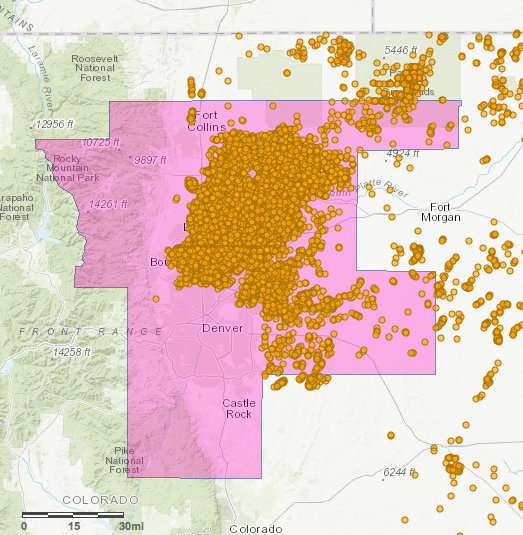
While some steps have been taken by State of Colorado air regulators to curb emissions from the oil and gas industry in the region, these cuts simply haven’t kept pace with development. With a boom in horizontal drilling and fracking in the region, air pollution has just continued to soar.
In fact, according to data from the Colorado Oil and Gas Conservation Commission, 2018 is on pace to see a record number of drilling permits approved along the Front Range and near-record permits for horizontal drilling and fracking wells.
In total, more than 3,000 drilling permits are likely to be approved along the Front Range by the end of 2018 and more than 2,500 of these permits–more than 80%–will be for horizontal drilling and fracking.
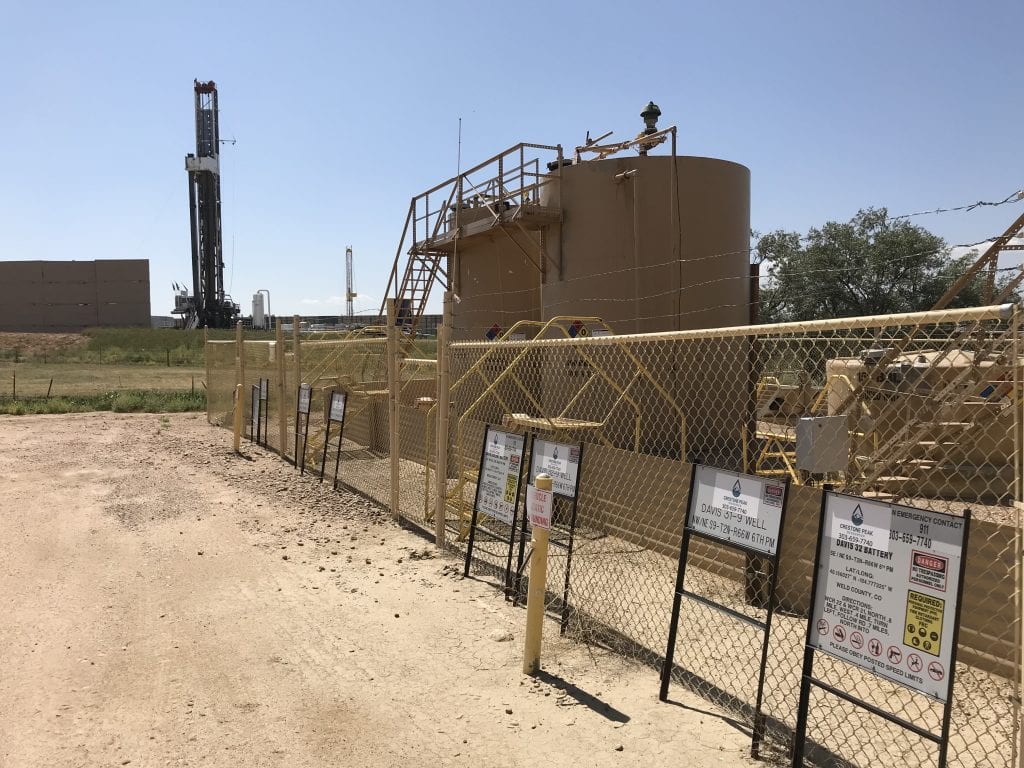
New oil and gas development outside of Fort Lupton, Colorado north of Denver.
Sadly, this isn’t surprising. An expert report commissioned by WildEarth Guardians in 2015 found that even under current state and federal air pollution rules, emissions from the oil and gas industry are projected to keep increasing.
It’s telling that in 2016, the Colorado Air Division claimed that ozone levels along the Front Range would be reduced to healthy levels by 2017. Obviously this hasn’t happened.
And even though this past year, industry committed to voluntarily reducing its emissions during high ozone days, this also obviously hasn’t happened.
In spite of this complete failure, the Air Division continues to tout it’s regulation of the oil and gas industry. The reality is, while they’re regulating, the regulation is failing.
WildEarth Guardians is pushing back against fracking along Colorado’s Front Range. We’ve challenged Trump Administration proposals for new drilling, are defending the region’s public lands, and are gearing up to confront the State of Colorado over its failure to rein in dangerous smog pollution.
And just this week, we challenged the Trump Administration over its plans to auction off more public lands along the Front Range for fracking.
As smog continues to smother the Front Range region of Colorado, it’s imperative we push back harder than ever against the oil and gas industry’s fracking plans.
